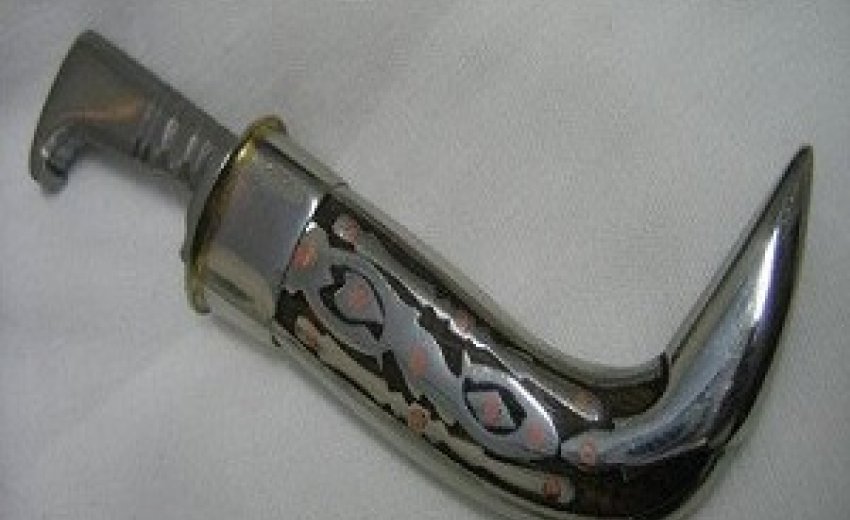 Feb 16, 2011: Some Squamish Sikhs condemn the recent decision by Quebec Parliament to ban the kirpan on its premises. The kirpan, they say, is often misunderstood as a weapon, but is merely a symbol of their faith.
Feb 16, 2011: Some Squamish Sikhs condemn the recent decision by Quebec Parliament to ban the kirpan on its premises. The kirpan, they say, is often misunderstood as a weapon, but is merely a symbol of their faith.
Before he leaves Squamish to work at a restaurant in Whistler, Amrik Hayer, 59, often tucks his kirpan, a symbolic miniature sword worn by baptized Sikhs, into his shirt.
Since he wears it under his shirt, he has rarely ever discussed it at work. But one day, as he changed clothes before his shift, a co-worker caught a glimpse of the kirpan. Surprised, he couldn't help asking, "Why do you wear a knife to work?"
A wisp of a smile broke on Hayer's lips. "This is not a knife," he said, holding up the kirpan. "It's a gift from my Guru."
Hayer has worn the kirpan for 13 years and this wasn't the first time he invoked the Guru to bridge the chasm between the kirpan's physical look as a sharp-edged weapon and its spiritual meaning as a symbol of the fight against injustice. Just as the cross is a constant reminder for Christians that the Son of God died for them, the kirpan is a similar emblem for courage and righteousness infused in the Sikhs more than 400 years ago by their tenth Guru.
Squamish Sikhs like Hayer wonder why the meaning, repeatedly and often fervently explained in Canada, was lost on the Quebec Parliament recently. As a deep-yellow Nishan Sahib (Sikh word for flag) fluttered one crisp morning at the Sikh temple on Fifth Ave. in downtown Squamish, Hayer and other kirpan-wearing men unfurled the debate on the Feb. 9th decision by the Quebec Legislature to ban the kirpan on its premises.
Although the ban was painted as a security issue rather than one of religious intolerance, Parti Quebecois member Louise Beaudoin, who tabled the motion, noted that Canadian multi-culturalism couldn't be forced on Quebec. Discussed in tones more commiserative than angry, the Sikhs at the temple came to resent the suggestion that the kirpan, once again, was being judged for its shape than its symbolic meaning.
Ravinder Singh Kooner keeps the kirpan close to himself. Except for the day he boarded a flight from India for Canada 21 years ago, he has never taken the kirpan off. Even when he takes a bath, he ties the kirpan around his head. He saw the Quebec decision as a beachhead from which attempts could be launched to muzzle religious and individual freedom.
"My kids don't event wear the turban, let aside the kirpan," said Kooner.
"And I have never asked them to wear it because it's their choice. Canada is a free country and wearing the kirpan is about freedom."
Kooner said in all these years no one has ever asked him about it or objected to him wearing the kirpan.
"I feel the guru's spirit near me when I wear the kirpan and I wear it all the time," he said.
The origin of kirpan can be traced back to a time of intense religio-political strife in South Asia during the 17th century. Mughal emperors of the time with a more fanatic bend made religious prosecution of Hindus and Sikhs a state policy. Under the Muslim emperor Aurangzeb, Hindus and Sikhs were made to pay a special tax (called Jaziya) to practice their own religion and were forced to convert to Islam. Refusing to do so could mean a death sentence sometimes carried out in public places with spectacular shows of brutality. (Thugs, it is said, could get a pat - and a small reward - for bringing to the royal court a Sikh head on a spear). It was in this highly charged atmosphere of fear and religious oppression that Guru Gobind Singh, the tenth Guru of Sikhs, stood before a congregation on March 30, 1699, and gave out a battle cry to fight against this reign of persecution.
As he sought to recast the motley crew standing before him as fearless warriors, he announced at the spot a new army called the Khalsa, or the army of the pure. To dissolve the crowd's religious and cultural differences, he asked the Khalsa to wear five Ks, symbol of their new faith: Kesh, or hair, kangha or comb, kara, or an iron bangle, kacha, shorts, and kirpan, a sword. As time passed and feudal aristocracies gave way to modern, democratic, nation-states with laws and courts, Sikhs in India started wearing a miniature kirpan as a symbol of the fight against tyranny and injustice.
Even though there have been a few instances where the kirpan has been used as a weapon, such as a stabbing in Brampton, Ontario in 2010, Kooner said that insults the meaning of the kirpan and such an action would not be taken lightly by the community in Squamish. It should be worn and seen merely as a symbol, he said, although one infused with a profound meaning.
"I feel powerful when I wear the kirpan," said Kooner.
"It gives me strength and I always feel like my Guru is close to me.

